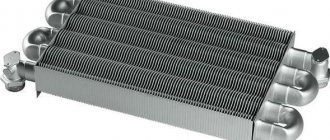Should I use a polyphosphate water filter?
Is a polyphosphate water filter really that harmless?
Does it really fulfill its function of removing hardness salts from water? How often does the polyphosphate backfill need to be changed? What happens if you don't replace the backfill on time? How much does annual maintenance of a polyphosphate filter cost? Should we consider alternative options for descaling? These and many other questions must be asked to a sales consultant before purchasing a polyphosphate water filter in order to make the right choice.
Strengthen the content with teasers?
Disadvantages of use
If we talk about polyphosphates, which are used to protect the washing machine, then in this case there are also disadvantages. When choosing models that are too cheap, you have to pay attention to a decrease in water quality and the absorption of a large amount of resources. As a rule, without additional cartridge replacement, the maximum service life is about six months. The film that forms during the chemical reaction quickly dissolves under the influence of hot water. Accordingly, when choosing a washing mode, the water heating should be no more than 55 degrees.
It is also worth taking into account the fact that with the active use of a polyphosphate filter, deposits of calcium and other salts may form on the sides. Unfortunately, getting rid of them is not so easy. Leaving them on the surface of a boiler or washing machine is also not recommended, since if the layer becomes too large, it will negatively affect the operation of the device. It is also important to note that polyphosphate water filters with a large storage capacity and salt content should never be used to purify drinking water or for prolonged contact with the skin.
Is the harm of polyphosphates a myth or truth?
Polyphosphates are salts of metals and polyphosphoric acids with a high degree of polymerization. The scope of their application is wide - from the food and agricultural industries to metal smelting and chemical synthesis. It is customary to divide polyphosphates into food (for example, the most famous food additive E452) and technical (eating them can lead to undesirable consequences, since during the manufacturing process they undergo poor purification and may contain various harmful impurities).
Phosphates are included in most modern products as leavening agents, anti-caking agents, color fixatives, and preservatives. Phosphates are necessary and very important for the functioning of the body. Phosphorus is considered an element necessary to strengthen the bone skeleton and teeth. It is closely related to calcium, together with which it “guides” muscle contractions and the accumulation of energy in cells.
Let's turn to the Great Medical Encyclopedia, which says: Anions of phosphoric acid - phosphate groups - are part of the most important organic compounds - nucleotides, nucleic acids, phospholipids, phosphoproteins, phosphorus esters of carbohydrates, vitamins, many coenzymes and other compounds - the most important participants in metabolism and energy. Potassium and sodium phosphates are the main soluble salts of orthophosphoric acid; phosphate anions are among the most important anions of living organisms and play a significant role in maintaining acid-base balance, forming a phosphate buffer system that generates acid equivalents.
The phosphate content inside cells is approximately 30-40 times higher than in extracellular fluids. Blood plasma normally contains phosphorus 2.5-6 mg/100 ml, ch. arr. in the form of inorganic phosphate, which is completely ionized and filtered by the kidneys. In red blood cells, phosphate is contained mainly in organic compounds, the content of which in blood plasma is low. OK. 15% of serum phosphate is bound to proteins. The content of pyrophosphate in blood plasma is 1-10 µmol/l.
The mineral part of animal and human bones consists of ch. arr. from orthophosphoric acid salts of hydroxylapatite ZCa3(P04)2"Ca(0H)2 and carbonate apatite ZCa3(P04)2 • CaC03" •H20. From the bones, phosphate can enter the blood plasma when the concentration of phosphate in it decreases, and when the concentration of phosphate in the plasma increases, it can be deposited in the bones. Significant amounts of phosphate, in the form of calcium fluorophosphate, are found in teeth.
Those. Phosphates are a vital building material for humans; they help produce, store and transport energy, participate in metabolism, maintain the functions of the heart and kidneys, and are found in a certain amount in our body. In this case, why is there so much talk on the Internet about the dangers of phosphates? Is this fact or fiction used by marketing to promote their products?
Phosphates can begin to harm your health only if they enter it in excess with food or drinking water, as well as with impaired metabolism, excess or lack of calcium in the body.
Excess phosphorus is fraught with disorders of the nervous system, headaches, the development of arrhythmia and urolithiasis. And because In products produced by modern industry, phosphorus is contained in excessive amounts, then such nutrition, especially the consumption of fast foods and frozen foods, can cause significant harm to human health.
Now let’s return to the topic of our conversation – polyphosphate filters.
For polyphosphate filters, technical sodium polyphosphate is used as backfill for water softening. Among all other polyphosphates, it is the most active water softener with high chelating ability. Sodium polyphosphate forms stable complexes in a shorter time and at lower temperatures (20-40 ° C) than sodium tripolyphosphate and other phosphates. Its advantages also include low caking during storage and anti-corrosion properties.
Most often, polyphosphate filters are installed in front of washing machines and heating boilers to protect heating elements and pipes from scale. This water then ends up in our taps and wastewater. Whether to use water treated with a polyphosphate filter for cooking and drinking is up to you. We will only give our recommendations:
- Remember that technical polyphosphates are less purified than food grade ones
- Try to determine the maximum permissible concentration of phosphates in your water using laboratory analysis and compare it with the daily intake of phosphorus, taking into account the approximate intake of phosphorus from food.
- The daily intake of phosphorus for adolescents and adults is up to 3-4,000 mg/day
- Please note that the maximum phosphate content in drinking water and domestic water is 3.5 milligrams per liter of water.
- When washing clothes, polyphosphates tend to linger in the fibers of the fabric. This may cause an allergic reaction in people with highly sensitive skin.
And yet, the danger of phosphates really exists and it lies in the effect of phosphorus on water bodies and the entire ecosystem of the planet. Coming in large quantities from wastewater into open water bodies, phosphorus leads to increased proliferation of blue-green algae, some of which have toxic properties (the most common are Microcystis aeruginosa and Aphanizomenon flos-aquae).
Our ecosystems are poor in phosphorus, therefore, when it enters a reservoir from the outside, the rapid development of unicellular and colonial microorganisms begins, which use phosphorus for life. This process gradually leads to the flowering of the reservoir and the extinction of fish, crustaceans and other inhabitants in it, because algae absorb large amounts of oxygen and also release toxins. Blue-green algae toxins affect protozoa, invertebrates, fish, and animals that drink the water and, to a lesser extent, humans who consume contaminated water or poisoned fish.
Phosphates also get into the water when using washing powders and most modern cleaning products. As a result, the ecological balance is disrupted and the difficulty of providing the population with drinking water increases. In Europe, realizing that the use of phosphates leads to an environmental disaster, the production of powders and cleaning products using them was banned.
It is now appropriate to call the “flowering” of water bodies a biological “plague” of the 21st century, the harmful effects of which extend to all parts of freshwater ecosystems.
Sodium polyphosphate effect on the body
Is a polyphosphate water filter really that harmless? Most often, polyphosphate filters are installed in front of washing machines and heating boilers to protect heating elements and pipes from scale. This water then ends up in our taps and wastewater. Whether to use water treated with a polyphosphate filter for cooking and drinking is up to you.
- We will only give our recommendations:
- remember that technical polyphosphates are purified worse than food ones;
- try to determine the maximum permissible concentration of phosphates in your water using laboratory analysis and compare it with the daily intake of phosphorus, taking into account the approximate intake of phosphorus from food;
- the daily phosphorus intake rate for adolescents and adults is up to 3-4,000 mg/day;
- Please note that the maximum phosphate content in drinking water and domestic water is 3.5 milligrams per liter of water;
- When washing clothes, polyphosphates tend to linger in the fibers of the fabric; in people with highly sensitive skin, this can cause an allergic reaction.
Is it possible to drink water after a polyphosphate filter?
It is important to understand that water that is purified using such a filter becomes technical and cannot be used for drinking or cooking.
Is the polyphosphate water filter washable?
Speaking about how harmful such a filter is for health, one thing can be said: it is undesirable to use such water for direct contact with the body, since it is a chemical reagent. However, if you put your hands in it if necessary, a chemical burn will not occur due to the low concentration.
Let's consider the principle of operation of a polyphosphate filter
A polyphosphate filter is most often a small filter consisting of a transparent plastic body and a cover with threaded holes for water inlet and outlet. The lid is unscrewed from the body and polyphosphate backfill in the form of granules or powder is poured into it. Water entering the filter passes through polyphosphate granules, which have the property of binding calcium and magnesium into poorly soluble complexes, which, when heated, lose their ability to be deposited on heating elements and metal surfaces of boilers, boilers, heat exchangers and pipes.
Over time, polyphosphates are completely consumed by binding calcium and magnesium ions and then the filter stops working. At this moment it is necessary to change the backfill. It is visually quite difficult to understand exactly when this process begins, because The backfill does not always dissolve completely, and the binding of calcium and magnesium ions may no longer occur. The exact timing of replacing the polyphosphate backfill can only be determined by water analysis. However, in domestic conditions no one will do regular water analysis. Therefore, the backfill is changed at the intervals specified in the instructions. Thus, the polyphosphate filter can work idle for some time or, conversely, the backfill has not yet been completely used up, but it is already being replaced with a new one.
In order to avoid inefficient consumption of polyphosphates, proportional polyphosphate dispensers were created, which automatically supply polyphosphate to the filter in a concentration of 3.5-4 mg/l of water. This microdosage of polyphosphate supplied to water was chosen based on the conditions that 3.5 g of polyphosphate is dissolved per 1000 liters of water.
It is also important to know that polyphosphate filters operate at water hardness up to 7 mEq/L. If you have harder water, you will need to choose a different method to descale your equipment.
The operating temperature of filters with polyphosphates should not exceed 55-60°C
What is a polyphosphate anti-scale filter?
To understand whether you need a polyphosphate filter, you need to understand the principle of its operation. It is also important to know what parts such a device consists of.
What does a polyphosphate filter consist of:
- A plastic flask, usually transparent.
- Plastic cover;
- Drain;
- Polyphosphate crystalline salt.
Before you buy a polyphosphate filter, you should read reviews about it
There are two variations in the design of salt filters based on the type of polyphosphate arrangement. In the first case, the substance is poured directly into the flask, and in the second it is placed in a special container, which is inserted into the flask like a cartridge.
Also, such filters are divided into types according to the method of water distribution. Direct-flow filters drive the entire water flow through the salt substance. Filters with dispensers distribute the water flow into two parts, one part is purified with polyphosphate and returned to the general flow. Thus, the water is softened to the desired hardness. Devices with dispensers can have the function of changing the level of water softening, and single-jet filters bring the liquid to a certain, non-adjustable parameter.
The powder for such devices may resemble broken glass or compressed white powder in appearance. This substance is otherwise called “Graham’s salt.”
So how does water purification occur in such filters? Without going into details, giving you a lot of chemical formulas and reactions, such devices operate as follows: Graham’s salt dissolves in water passing through the filter and binds magnesium and calcium ions to each other, thereby weakening their structural strength, which is why they can no longer settle into scale when heated.
Many professionals advise choosing polyphosphate in powder form rather than in crystal form. They claim that luche powder dissolves in water, thereby softening the water.
Manufacturers will assure that water purification is not the only function of polyphosphate filters. They also form a film on the parts of the device with which they interact, preventing scale from settling. Also, some time after using the filter, the scale that has already formed dissolves.
Installation and maintenance of a polyphosphate filter.
Polyphosphate filters are recommended to be installed to protect washing machines, boilers, geysers and boilers from scale. The installation process is simple and does not take much time and effort. To install, you need to unscrew the inlet hose of your equipment, attach the polyphosphate filter to the hose or water supply tap using the threaded hole in the filter cover and attach the inlet hose to the second threaded hole in the cover or filter housing. During the first test run, you must ensure that there are no leaks through the connected elements.
Next, you need to write down the date of installation of the filter or mark it on the housing label. This way you will not forget when it is necessary to replace the backfill.
Before installing a polyphosphate filter, it is advisable to remove old scale deposits from your equipment. This can be done using citric acid, vinegar or special anti-scale agents sold in hardware stores. If preliminary washing of the equipment has not been carried out, it is necessary to install a sludge trap filter (or an ordinary mud trap) into the system, because the use of polyphosphates leads to the gradual peeling off of old deposits.
The resource of a polyphosphate filter cartridge depends on its volume and the degree of water hardness. The approximate timing for replacing the backfill should be indicated in the technical data sheet for the product. The average replacement of backfill is six months. With high water hardness, the backfill can completely dissolve in 2-3 months. With softer water, the cartridge can last for a year.
When purchasing a polyphosphate filter, we recommend paying attention to the manufacturing quality of the flask or reading reviews on specific products, because Flasks from unreliable manufacturers may burst.
Why do you need a polyphosphate filter for a washing machine and boiler?
November 15, 2016November 16, 2016
Hard water is a serious problem. It leads to rapid breakdown of expensive equipment, therefore, to protect washing machines and boilers, it is recommended to install a special polyphosphate filter for water softening.
When passing through its filler - sodium polyphosphate, water is freed from impurities that lead to scale formation.
Operating principle of a polyphosphate filter for water softening
The design of the filter is quite simple.
It consists of the following components:
- transparent flask,
- lid,
- drain,
- polyphosphate salt crystals.
The operating principle of the device is as follows: water, passing through the crystals, is saturated with sodium polyphosphates, and a film is created that envelops hard salts, so scale does not form on the heating elements. After passing through such a filter, water becomes technical and cannot be used for drinking.
There are several modifications of the filter on the market - capsules can be poured into a separate container or placed directly inside the equipment. Structurally, the devices can be direct-flow or presented in the form of dosing filters.
Is it worth installing a polyphosphate filter?
If you do not install a polyphosphate filter, not only will the heating elements fail, but also the valves of household appliances will begin to accumulate scale.
This will lead to the fact that the equipment will spontaneously take in water, the rate of water heating will drop, and electricity consumption will increase. All this will sooner or later cause breakdown of expensive equipment. The filter will also eliminate the need for constant cleaning of washing machine valves.
Another useful property of the device is the ability to dissolve already formed layers of scale. And the softer the water, the less detergent is required for washing or washing dishes.
Why can't you drink water after a salt filter?
Polyphosphate filters are designed to purify only process water for one simple reason - polyphosphate is a toxic substance. Moreover, at water temperatures above 40C, polyphosphates are destroyed and become ineffective.
Install this water purification device exclusively for domestic purposes!
VIDEO INSTRUCTION
How often to change and clean the polyphosphate filter
The filler consumption is quite economical - 3 grams per 1000 liters. As you use the crystals, they dissolve, so they need to be topped up periodically.
Manufacturers recommend completely replacing the contents of the flask if the volume of crystals in it has decreased exactly by half or if the filling of the flask has not changed over a long period. On average, as practice shows, the service life of the device is about six months.
The device is installed directly in front of the boiler and household appliances. It is necessary to make a connection in the pipe for equipment with a tap, then install a filter and then connect the equipment itself. It can also be installed directly into the hose, from where water will flow into the boiler or washing machine.
Before installation, the polyphosphate filter must be washed. This can be done with running water under a regular water tap. This is to remove small crystals that may pass through the hose and clog the filter in the washing machine or dishwasher valve.
What to buy - rating
1.Geyser 1PF is a domestic polyphosphate filter, designed to protect boilers, washing machines, and dishwashers from hard water. It reduces the amount of lime deposits, extends the life of equipment, and helps reduce the need for detergent consumption. Due to the transparency of the case, it is easy to control the contents.
Cost – from 250 rubles.
2.Aquafon Styron - a polyphosphate filter from the Russian brand "Aquaphor". It has proven itself in protecting washing machines and dishwashers from scale. Completely replaces any powder descalers. It is mounted between the water supply pipe and the equipment itself. The connection dimensions are standard, so no adapter rings are required for installation. The filling is enough for 300 washes.
Cost – from 300 rubles.
3. Filter dispenser WFST, BEST-2 – produced by the Polish company USTM. Protects heating elements of household appliances from clogging and scale. To be installed between the tap and the water supply hose to the washing machine or dishwasher. The filler volume is 100 g, which is enough to purify 20 thousand liters of water.
Cost – 306 rubles.
- ATMOR ATP is an Israeli product. Reliable and easy to operate and install. Contains high quality sodium polyphosphate crystals. Buyers highlight the excellent build quality and materials themselves.
Cost – from 300 rubles.
filteru.ru
How much does it cost to maintain a polyphosphate filter for 1 year?
This question depends on how much water flow will pass through the filter annually. When installing a filter only in front of the washing machine, the consumption will be less; if another boiler or boiler is added to the washing machine, the consumption will increase.
Nevertheless, let's try to calculate the approximate average cost of purchasing and maintaining a polyphosphate filter using the example of a washing machine.
The average cost of purchasing a polyphosphate filter for a washing machine is 350 rubles. The filter already contains a backfill, which, according to the manufacturer, is enough for 300 washes with low water hardness.
Taking into account that the average family with children washes once every 2-3 days, this backfill should be enough for 600 days, i.e. almost 2 years of use.
Next, you need to purchase backfill, the average cost of which is 200 rubles. to the filter capacity.
In total, on average, you will spend no more than 175 rubles per year.
The very low cost of operating a polyphosphate filter attracts customers with its low cost and ease of installation. Therefore, in order to make the right decision, I want to summarize and describe the main pros and cons of installing a polyphosphate filter in your apartment.
Pros:
- scale protection for household water heating equipment
- ease of installation and operation
Minuses:
- works at temperatures up to 55°C (not an obvious minus, since we don’t often use higher temperatures)
- It is advisable to use only on technical water
- may cause an allergic reaction after washing and washing dishes
- worsens the ecology of water bodies, making it difficult to provide the population with drinking water
- It is possible that the bulb will rupture and the apartment will flood when purchasing a product from unreliable manufacturers
Which one is better to choose?
If the water in the water supply contains visible and precipitated impurities, then it is best to install a main purifier. It does not change the composition of the water, it only removes relatively large particles (rust, sand). Such a filter is installed on the inlet pipe, after the meter.
When wet objects subsequently dry out and become covered with stains (limescale), rough cleaning will not help protect the heating elements of electrical appliances from scale deposits. Then it is better to purchase a polyphosphate filter for your washing machine.
A magnetic filter is most suitable for a gas boiler.
It is safe, unpretentious, and will perfectly purify water. Together with a coarse cleaner, such a filter will certainly last for many years, since the magnetic effect is almost not lost over time.
To find out for sure whether a filter is needed to soften the water, it is recommended to check its composition (order a laboratory test). This will not entail large expenses, but it will allow you to accurately determine the necessary water purifiers, as well as their power.











